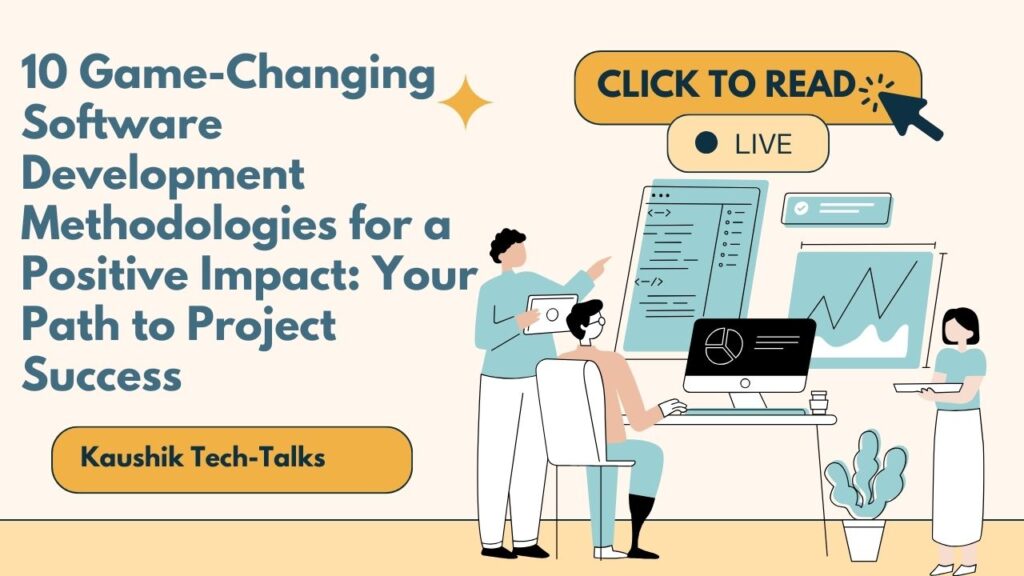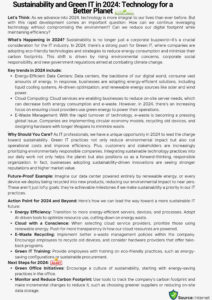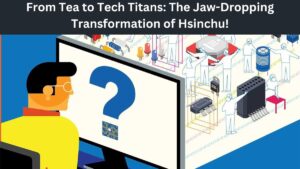Maximize Efficiency and Minimize Risk: Find the Perfect Software Development Methodology for Your Project with These Expert Insights:

In the fast-paced world of software development, choosing the right methodology can make all the difference between project success and failure. With numerous options available, each with its own strengths and weaknesses, navigating the landscape of software development methodologies can be daunting. However, by understanding the key principles and benefits of each approach, you can confidently select the methodology that best fits your project’s requirements and objectives. In this comprehensive guide, we’ll explore 10 game-changing software development methodologies that have a positive impact on project outcomes, empowering you to achieve success in your next software development endeavor.
- Agile Methodology:
Agile methodology is a flexible and iterative approach to software development that emphasizes collaboration, adaptability, and customer feedback. By breaking down projects into small, manageable increments called sprints, Agile enables teams to deliver high-quality software quickly and respond to changing requirements effectively. With its focus on continuous improvement and customer satisfaction, Agile has become one of the most popular methodologies in the software development industry. - Scrum Framework:
Scrum is an Agile framework that provides a structured approach to project management, with defined roles, ceremonies, and artifacts. At the heart of Scrum is the concept of the Scrum team, which consists of a product owner, Scrum master, and development team. Through regular meetings such as sprint planning, daily stand-ups, and sprint reviews, Scrum fosters transparency, collaboration, and accountability, enabling teams to deliver value incrementally and adapt to changing priorities. - Kanban Method:
Kanban is a visual management method that focuses on workflow optimization and continuous delivery. By visualizing work items on a Kanban board and limiting work in progress (WIP), teams can identify bottlenecks, minimize lead times, and optimize resource utilization. With its emphasis on flow efficiency and pull-based scheduling, Kanban enables teams to achieve a smooth and predictable delivery process, ultimately improving productivity and customer satisfaction. - Lean Software Development:
Lean software development is a methodology inspired by lean manufacturing principles, with a focus on eliminating waste, maximizing value, and continuous improvement. By emphasizing customer focus, value stream mapping, and just-in-time delivery, Lean enables teams to streamline their processes, reduce cycle times, and deliver high-quality software at a lower cost. With its emphasis on efficiency and effectiveness, Lean has gained traction in industries beyond software development, including healthcare, finance, and manufacturing. - Extreme Programming (XP):
Extreme Programming (XP) is an Agile methodology that emphasizes technical excellence, collaboration, and rapid feedback. Through practices such as test-driven development (TDD), pair programming, and continuous integration, XP aims to improve software quality, responsiveness, and adaptability. By focusing on the core values of communication, simplicity, feedback, and courage, XP empowers teams to deliver software that meets customer needs and exceeds expectations. - DevOps:
DevOps is a cultural and organizational movement that promotes collaboration between development and operations teams, with a focus on automation, continuous integration, and continuous delivery. By breaking down silos, fostering a culture of shared responsibility, and automating repetitive tasks, DevOps enables teams to deliver software faster, more reliably, and with fewer errors. With its emphasis on agility, collaboration, and feedback loops, DevOps has become essential for organizations looking to accelerate their software delivery pipelines and improve their competitive advantage. - Waterfall Methodology:
While Agile methodologies have gained popularity in recent years, the Waterfall methodology remains a viable option for certain types of projects, particularly those with well-defined requirements and low levels of uncertainty. In Waterfall, the project is divided into sequential phases, with each phase building upon the previous one. While Waterfall provides a structured approach to project management and clear milestones, it can be less adaptable to changing requirements and may lead to longer lead times and higher costs. - Spiral Model:
The Spiral model is a risk-driven software development methodology that combines elements of both Waterfall and iterative development. By emphasizing risk management, prototyping, and incremental releases, the Spiral model enables teams to address uncertainty and complexity effectively while delivering high-quality software in a timely manner. With its focus on risk analysis and mitigation, the Spiral model is well-suited for projects with evolving requirements and high levels of uncertainty. - Rapid Application Development (RAD):
Rapid Application Development (RAD) is a software development methodology that prioritizes speed and flexibility, with a focus on iterative prototyping and user feedback. By involving end-users early and often in the development process, RAD enables teams to quickly build and refine software solutions that meet user needs and expectations. With its emphasis on rapid iteration and customer collaboration, RAD is ideal for projects with tight deadlines and evolving requirements. - Feature-Driven Development (FDD):
Feature-Driven Development (FDD) is a model-driven software development methodology that focuses on delivering tangible, working features incrementally. By breaking down the project into manageable feature sets and prioritizing features based on business value, FDD enables teams to deliver software iteratively while maintaining a focus on quality and customer satisfaction. With its emphasis on feature-level planning, design, and construction, FDD is particularly well-suited for large, complex projects with multiple stakeholders and dependencies.
Conclusion:
In conclusion, selecting the right software development methodology is crucial for project success. Whether you choose Agile, Scrum, Kanban, Lean, Extreme Programming, DevOps, Waterfall, Spiral, RAD, or FDD, each methodology offers unique benefits and challenges that must be carefully considered based on your project’s requirements, constraints, and objectives. By understanding the key principles and practices of each methodology and tailoring them to fit your team’s culture and context, you can unlock the full potential of your software development projects and achieve success in today’s competitive marketplace.






